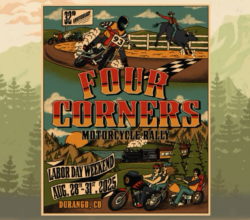Oct. 5, 2009 – An ongoing, critical discussion
By Neil Pascale
Editor
Could the industry be closing in on a solution to the lingering problems surrounding the selling of youth ATVs that have been created by a new lead law?
The Consumer Safety Product Commission (CPSC) chairman, Inez Tenenbaum, hinted at that in her recent testimony at a U.S. House subcommittee hearing in Washington, D.C. An industry group, however, later spoke of the significant challenges that remain in addressing the lead law.
Youth-designed ATVs, motorcycles and snowmobiles that do not meet lead standards as imposed by the 2008 Consumer Product Safety Improvement Act (CPSIA) were pulled off showroom floors earlier this year. The CPSC later stayed enforcement of the law, but many youth vehicles remain off showroom floors because of lingering liability concerns at the state level.
Tenenbaum, the relatively new CPSC chairman, told committee members Sept. 10 that the CPSC met recently with industry officials to discuss how to make youth-designed vehicles meet CPSIA standards. Tenenbaum said the industry is working to make vehicle parts that contain lead inaccessible to riders. “They’re getting back to us to show how they could do that,” she said.
However, the Motorcycle Industry Council (MIC) later released a statement showing the current gap that exists between the industry and the CPSC on this issue.
“ATV and motorcycle manufacturers could cover or make compliant parts on these vehicles that a child operator routinely interacts with, such as brake and clutch levers, throttle controls and hand grips,” the MIC statement said. “However, the issue has always been about the component parts not touched while in the riding position, such as engine housings, carburetors, fasteners, frames and structural components that exceed the lead limit. These parts contain lead for structural, durability and other safety critical reasons. Under CPSC’s final rule on ‘accessibility’ published in the Federal Register on Aug. 7, all of these vehicle parts are defined as ‘accessible’ and subject to the lead content limits — even though there is no evidence of any kind that any child has ever been harmed from any lead contained in such parts.”
The frustration surrounding what the CPSIA dictates surfaced in the committee hearing. At one point, committee member Rep. Bart Stupak (D-Mich.) told Tenenbaum, “I’m glad you’re working with them (the powersports industry), but if we don’t have any deaths from lead exposure, why do we have to go through all these gyrations?”
Tenenbaum answered, “We’ve had plenty of cases of deaths of children from lead exposures.” Stupak then interrupted, asking, “But from ATVs or motorcycles?”
Tenenbaum had earlier acknowledged that no reported ATV deaths or injuries had resulted from lead exposure, but she also pointed out the CPSC was simply following Congress’ direction in enforcing the CPSIA regulations.
“I agree,” Stupak said, “but with any law there is a practical application, correct?”
“No question about it,” Tenenbaum said, “and that’s why the industry is coming back to us with practical solutions and we think this will take care of any problems they have and they won’t have to be regulated.”
The MIC, in its statement, called for two “common sense ways” to end the effects of the CPSIA.
“Congress or the CPSC should limit the parts of youth off-highway vehicles deemed ‘accessible’ under the lead content restrictions to those components that riders routinely interact with during normal operation, or youth off-highway vehicles should be categorically exempted from restrictions, as provided in legislation already introduced by U.S. Rep. Denny Rehberg (H.R. 1587) and Sen. Jon Tester (S. 608).”
At press deadline, both the House and Senate bills were introduced and referred to committees but have not come up for a vote within their committees.

